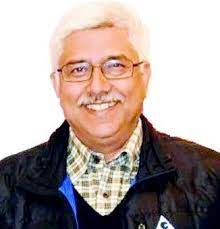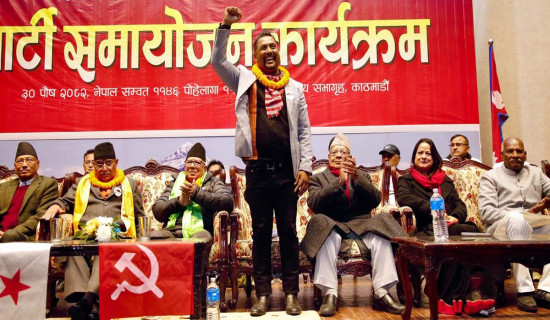- Wednesday, 14 January 2026
Fighting Corruption Through Cartoons
Dr. Kundan Aryal
With the local poll campaign gripping the country, the Cartoonists’ Club of Nepal recently organised an exhibition entitled ‘Nisana’ (target) to expose the cases of corruption and discrepancies besetting the nation. There is no dearth of commitment on the part of the parties and the candidates to eradicate corruption from the society. Hence, the show is expected to play an important role in spreading awareness against corruption during the election, a crucial moment to pick the people’s representatives for the public offices.
The show aims to combat corruption and day-to-day socio-political and economic anomalies roiling the Nepali society. Over the years political cartoons have been lampooning idiosyncrasies of politicians and political parties. Contemporary editorial cartoons have effectively represented trends, activities and situations of different walks of life.
Caricatures, editorial cartoons and different forms of illustrations have increased in Nepal following the 1950 political change. Gobardhan Saha, a Nepali student who went to Patana of India to attend an examination of Master’s in Art, made a cartoon after reading a newspaper Samyukta Prayas which was published in Kathmandu. Today, that cartoon made by an amateur is considered the first published cartoon in Nepal. It had manifested the debate between the demands of the election of the constitutional assembly and parliament.
Diversity
These days, Nepali newspapers and online news portals are publishing insightful and creative editorial cartoons frequently. The print and digital media carry a significant number of editorials, gags and comic cartoons every day. Newspaper cartoons have been depicting socio-political and economic realities in the form of humour and satire for the last six and a half decades. Development of Nepali cartoons has undergone three phases marked with struggle and advances in terms of art quality and satirical themes. The current stage is characterised by the diversity of content and higher level of creativity.
Generally, a cartoon is an expression of humour and satire in the form of visual communication. The best cartoon is that which is capable to speak the universal language with lines and strokes, preferably without words or minimum words. McLuhan, a renowned communication expert from Canada, argues that cartoons are cool in comparison to photographs. A camera captures everything that comes in front of the lens. In the case of cartoons, only a few select objects depict the situation symbolically.
There could be distortion as well as exaggeration of faces. However, a comparatively low amount of data in a cartoon, in comparison to a photograph, requires more involvement from the audience to invent the meaning. In this regard, a photograph is considered a provider of high definition content with all the details and a cartoon is considered low definition material which requires an audience to fill in the blank. But an audience enjoys in filling in the blanks. Hence, according to McLuhan, caricature or cartoon would grab the attention of an audience of all levels, from the people with the beginning literacy skills to the intellectuals and scholars.
Basu Kshitij, chairperson of the Cartoonists’ Club of Nepal, says that Nepali cartoonists have been discharging social responsibility exposing the social evils like corruption. He reiterates that the recent exhibition is another milestone to demonstrate their commitment to fighting various malfeasances of society and expressing solidarity towards building a culture of ethical integrity. According to him, it is not only an exhibition but rather a creative crusade against corruption.
Nepali cartoonists depict any subject under the sun. In a bird's eye view, they have been creating five types of cartoons or caricatures such as editorial or political, panel or strip, gag and cartoons on chronic social issues. Before 1990, published and unpublished cartoons were mostly political in Nepal. Only courageous cartoonists could dare to make political satire and cartoons.
Forming public opinion
Chandra Man Singh Maskey, a prominent fine artist, was sentenced to life for making a cartoon that sought to generate awareness against the then Rana regime in 1940. He had depicted Rana rulers as dogs and people as an elephant. In late 1980s, Samikshya Weekly, which ran under the editorship of Madan Mani Dixit, was banned because it published a cartoon by Balaram Thapa. He had symbolically used the Birabal-Akabar fable and presented a famous conversation between them. Akabar asked: What are you doing Birbal? The he answered: I am making cow by washing a donkey. It was in the context of the referendum in which people were asked to choose between the reformed Panchayat and a multiparty system.
Corruption and other forms of financial anomalies have posed big hurdles in achieving social justice, development and prosperity in the country. They can be uprooted with the joint efforts of professionals from different fields. Especially, the professionals from the creative fields can play decisive role in educating the masses and forming public opinion against corruption and political discrepancies. Thus, by organising Nisana, the Nepali cartoonists have really hit the bull’s-eye.
(Dr. Aryal is associated with the Central Department of Journalism and Mass Communication of Tribhuvan University.)
















